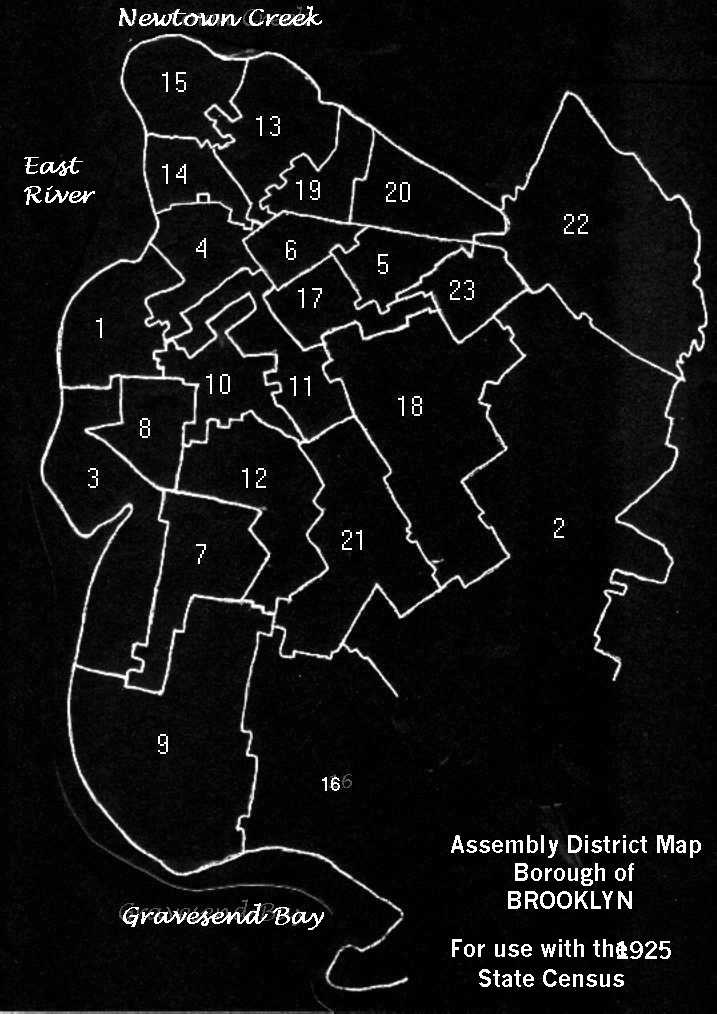
Hatten, "The 'Forgotten' Census of 1880," National Genealogical Society Quarterly 80 : 57-70.) When the Population Schedules of a town or district turn up persons of interest to the researcher, these supplemental schedules for the same area should definitely be checked. Here will be found names and other data of persons classified (in the words used at that time in history) as insane, idiots, deaf-mutes, blind, homeless children, prisoners, and indigents in institutions or boarded in private houses. (Note: the 1860 schedules are missing for several counties.)įor 1880, there are the Supplemental Schedules for the Defective, Dependent and Delinquent Classes. There are no personal names in these schedules, but the statistics will give the genealogist a better picture of the community in which a family lived, and the information on newspapers and churches can be used as leads for further research.
#1925 NEW YORK CENSUS PLUS#
(Note: the 1870 Industrial Schedules are missing for Albany through Erie.)įor the 1850-70 censuses there are schedules called Social Statistics, which consist of single summary sheets for each town (or for each county in 1870), giving figures for total assessed value of property, taxes collected, schools and students, libraries, churches (by denomination), paupers, crime, and wages, plus the names of newspapers serving the area.
The Industrial Schedule will indicate the type of business, capital invested, number of persons employed and their wages, raw materials used and their cost, and the volume and value of end products. If the business was not operated at home it may not be found in the same town or district where the owner appears on the Population Schedules a city directory might be used to determine the business address. To be listed, however, the business did have to generate a minimum income, so that not all are recorded. The name Industrial Schedules may conjure up images of large factories, but in fact most of the entries are for very small businesses, often for a self-employed man such as a carpenter or blacksmith. If a family lived on the same property at more than once census, the Agricultural Schedules will illustrate the growth (or decline) of their farm. The schedule for 1880 is particularly detailed. The Agricultural Schedules can provide interesting detail for a family history.įor a head of household just listed as a farmer in the Population Schedules, the Agricultural Schedule for the same town or district will give valuable data about the farm, such as size and value of the property, number of farmhands employed, numbers of different kinds of livestock, and production of certain crops. Since few death records exist for these years for most of the State (outside of New York City), the Mortality Schedules can be very important from a genealogical standpoint. These deceased persons are not included in the Population Schedules of the same census, but in 18 each death is keyed to a family in those schedules. In addition to the usual census data, cause of death is listed. The Mortality Schedules are supposed to list everyone who died during the twelve months prior to the census date (e.g., 1 June 1849 through, 1 June 1859 through, etc.).
#1925 NEW YORK CENSUS FREE#
The original copies of these schedules for New York State are held by the State Library in Albany.įully searchable copies of all of them are also available to subscribers (including library subscribers) of - in fact, New York State residents may be able to gain free access to this and other New York databases on.

This article will provide a brief overview of these Special Schedules and what one can learn from them. The Special Schedules fall into four categories:

Most researchers are familiar with using the "Population Schedules" of federal censuses from 1850 - 1880 - these records are some of the most widely used of all genealogical sources.īut have you explored the "Special Schedules" of the 1850-1880 censuses? Many researchers overlook these collections even though they contain unique information of genealogical and historical value.


 0 kommentar(er)
0 kommentar(er)
